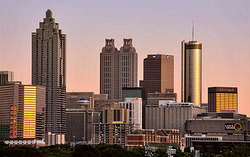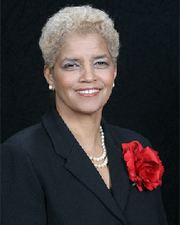AP reports (very badly) on a Brookings Institution report showing that suburban poverty rates are catching up with those of the inner city.
"Economies are regional now," said Alan Berube of Brookings, implying that if a metro area’s economy is sound poverty rates will be low everywhere, and if they’re high they will be high everywhere.
That’s true, but it misses the key point.
The key point is what I call "the second explosion" of urban development.
Manhattan is a good example. Manhattan is a dreamland, south of 110th Street. But with small apartments now worth $1 million or more, folks are forced to move in other directions. The first steps were to areas like Brooklyn Heights and lower Harlem — the Clinton office on 125th Street is a good example of this. Gradually this wave spreads out into other areas of the city that have easy, reliable transport links with the center, replicating the city’s initial development over a century ago.
Explosions like Manhattan are happening, and have happened, around the country. That’s why so many new ballparks are being built in urban centers, why so many new museums and other attractions are going there. The center, which was once where the offices were, is now where best people are. The offices are now somewhat off-center, often in "edge" neighborhoods with good freeway links.
The explosion in the center moves outward, and pushes the poor out with it. Some hang on, older folks may move out with relatives who have "made it" in the suburbs, and a new ring of poverty forms, at the edge. These were the original "edge city" developments, around an Interstate highway that may be known as the "loop" or "perimeter." The poor cluster beyond this edge, in older suburbs, and this ring, too, starts moving outward.
I have watched this happening in my own hometown of Atlanta since I moved here in the early 1980s. What is different now is that our government is actually supporting the second explosion. Mayor Shirley Franklin has invited high-end developers in. Some neighborhoods have been destroyed in the process. But the result is that the demographics of the city are changing.
Atlanta is a city defined by the spine of Peachtree.
- The south edge, the old urban center, is now government. The
state government, the courts, federal offices and (most especially) a
university, Georgia State University, which is taking over office
buildings abandoned by banks and headquarters staff. - Franklin has also endorsed the creation of a "tourist town" at
the north edge of downtown. This is where the city’s new Aquarium is
located. A Civil Rights Museum is going in, and a world of Coca-Cola.
Combined with Philips Arena, Turner Field and the Georgia Dome, the
downtown hotels are filled even while business moves out. - Those offices are moving north, either into Midtown or further
north into Buckhead. The tony residences are moving there with them —
Peachtree Road in Buckhead is now lined by enormous condo towers
housing such luminaries as Elton John. (In her last years Coretta Scott
King lived in one.) - All this is spreading east and west. To the west is Atlantic
Station, an enormous new office-shopping-condo complex (located just north of Georgia Tech, and south of lower Buckhead). To the east are
the Carter Center, Fernbank Science Museum, and the old intown
neighborhoods of Inman Park and Candler Park, where homes that sold for
$70,000 20 years ago are now worth 10 times that much. - The signature of Franklin’s term will be the Beltline, a
bike-hike-streetcar trail surrounding the inner city on old railroad
beds from the first explosion. An old quarry on the west side, which is
now a very poor neighborhood indeed, will become a 1,000 acre park, the
quarry itself a reservoir expanding the city’s water treatment
capacity. Want to make a ton of money 20 years from now? Start buying
in there now.
Notice what happens to the demographics in all this? Atlanta, which was
a city of 400,000 mostly poor people, stuffed into public housing and
starved by a racist state government, is now a city of over 500,000
mostly upper middle class. The schools are getting better, one by one,
the public services are improving, and the tax rate isn’t jumping,
despite the costs of a $3 billion sewer overhaul.
What happens to the poor? They move to the suburbs. They move down
Covington Highway in South DeKalb, or Highway 85 in Clayton County.
They move out to Smyrna and South Cobb, or Norcross and South Gwinnett.
This is happening everywhere, and the political result in the north is
that voters who once thought they could run away from urban problems
are staying to face them, voting Democratic in the process. Here in the
South, they’re moving further out, into the exurbs of Hiram, Powder
Springs, around Lake Lanier, into the mountains, and up I-85 or I-75
practically to the state line. This is now the dominant,
Republican-voting arc of the state. Business is dominated by real
estate and investment. The folks moving out there want walls to protect
them from the city they left behind.
It’s possible because there is still abundant land in Georgia, and gas
remains cheap. Double the price of gas and you’ll push more people not
only toward the center, but politically they will move toward the left, toward dealing with urban
problems and acknowledging that necessity.
This will happen sooner than any southern politician now imagines. The looming environmental crisis, global warming, energy prices, they are all going to force us to live closer to work. The middle class will be unable to flee, even in the South.
And Atlanta, the center, will be there to welcome them, thanks to Mayor Shirley Franklin.













